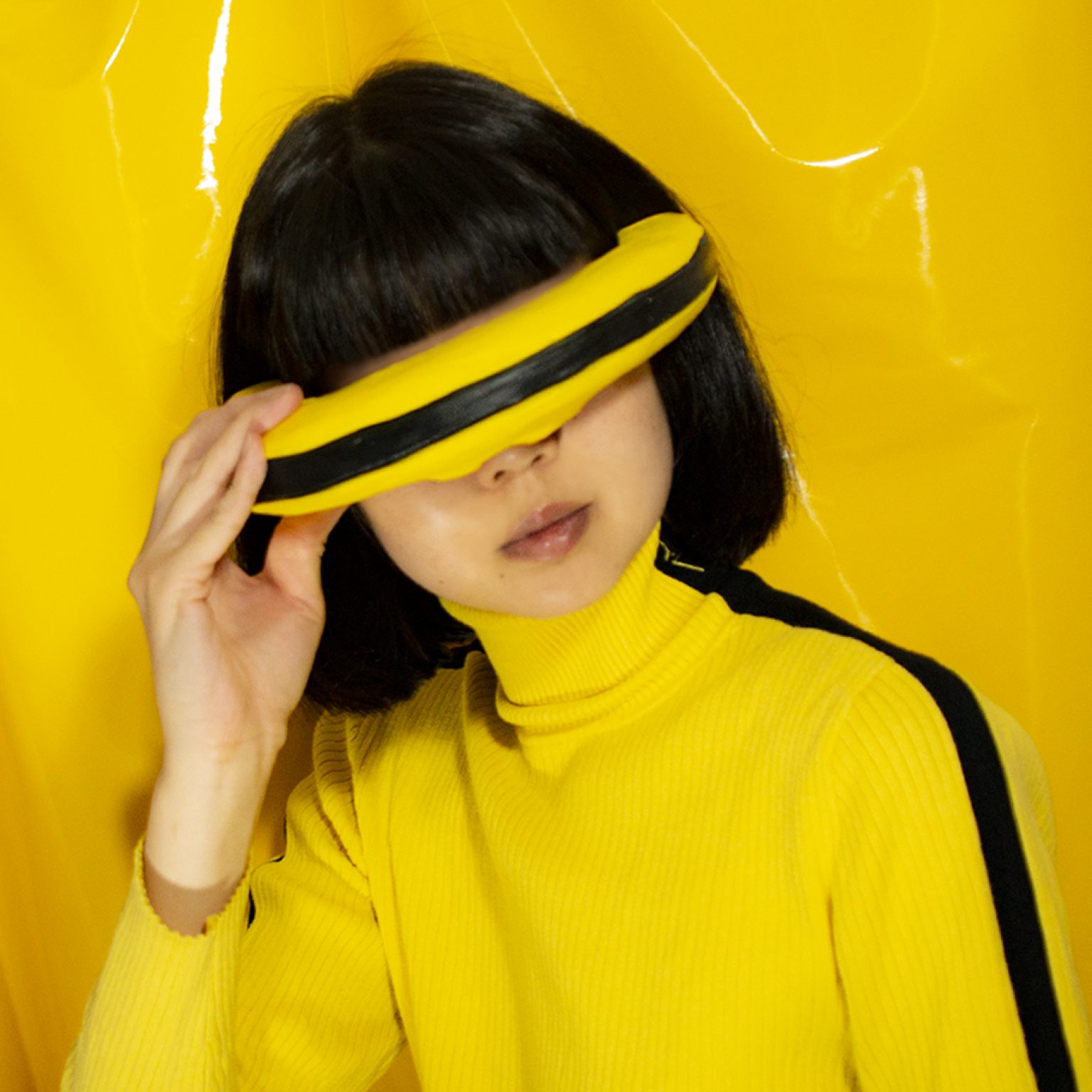Ceramics can be the perfect medium for embracing personal histories, expressing individuality, and building an empire—as RC Shen demonstrates. RC is a New York-based freelance designer and art director who spends as many spare hours as possible in the ceramics studio planning elaborate clay constructions that become parts of series like “$YMBOL$” (items symbolizing prosperity in Chinese culture) and “CHICKEN & RICE” (thirty-five different international dishes using those two ingredients). Lately, RC is stretching the possibilities of her craft by playing with scale, the relationship between objects and the human body, and movement. Her work is refreshingly different from the likes of dip-glazed cylindrical tableware, but the deeper appeal of her creations is its aura of fun and encouragement. As the ceramicist-goddess of “the world of marinatedclouds”, RC warmly invites us to find inspiration in her work to go and make our own worlds with confidence.
When did you start making ceramics and why did you begin?
I started ceramics a little over a year ago as a way to express myself. I had been working full time as a designer/art director at different agencies over the years and was looking for another outlet outside of work to channel my creativity. Something new, fun and just for me.
The first series of objects you published is about how the Chinese written and spoken language come together and create symbols of prosperity. Part of the reason behind this work as well as some of your other pieces seems to be for heightening cultural awareness and providing educational context. Why was it important to you to create objects in connection to Chinese culture?
It stems from both interest and pride. Being raised Taiwanese was a huge part of my upbringing and is still a core part of my identity today. It’s something I take immense pride in. By showcasing my cultural upbringing, my hope is that it will interest and inspire whoever sees it to not only be interested in where I come from but also feel proud of where they come from, whether we share the same culture or not.
“My main objective for creating ceramics is to express who I am and vocalize my thoughts—thoughts that have been shaped and influenced by different people, society, curiosities, the internet, and personal experiences.”
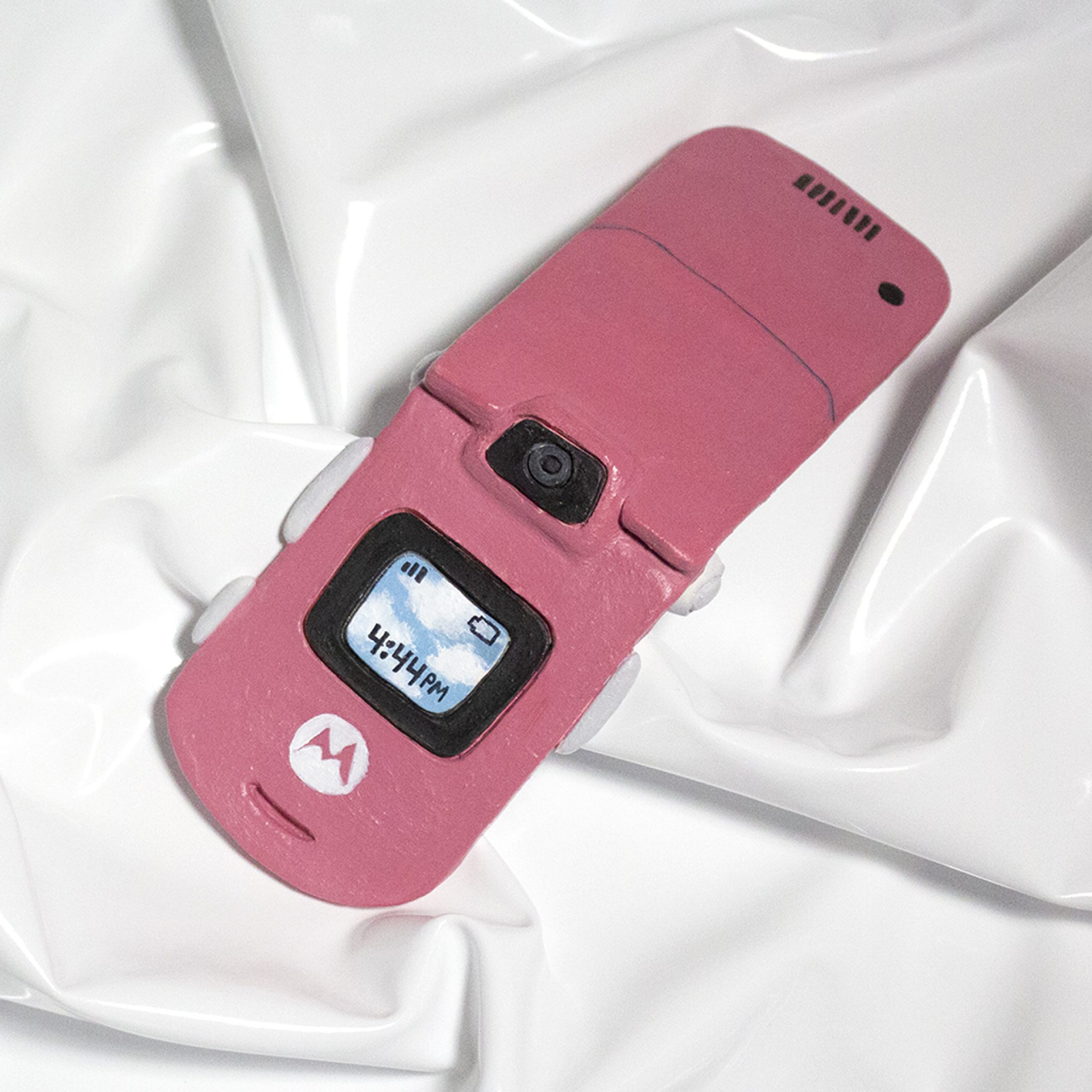
RAZOR (Outside)
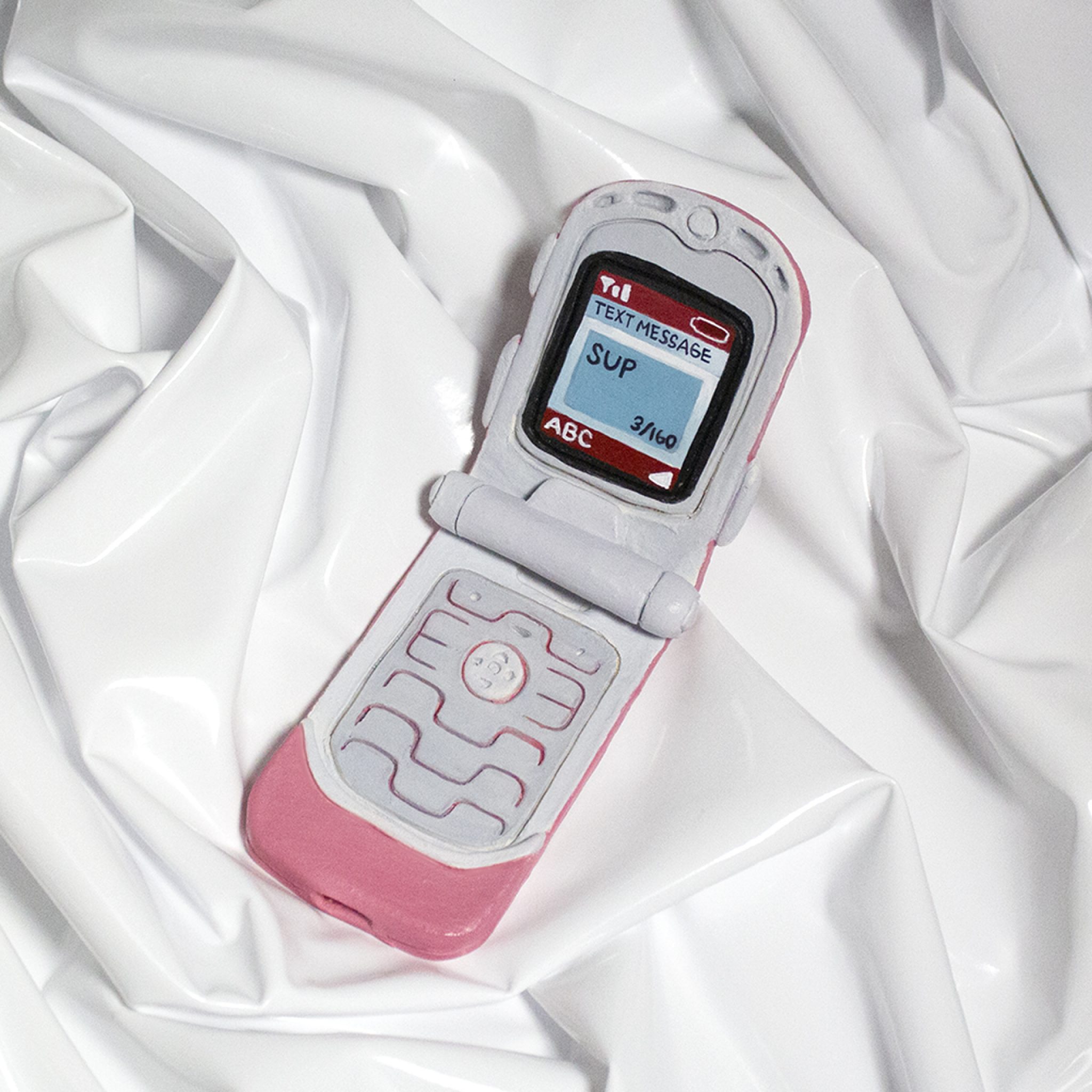
RAZOR (Inside)
Other series of objects seem to be closely linked to how you think of yourself and memories you have from growing up. Why do you turn to these topics for inspiration?
I turn to these topics for inspiration so I can share the journey of where I come from, who I am today and the person I am becoming. My main objective for creating ceramics is to express who I am and vocalize my thoughts—thoughts that have been shaped and influenced by different people, society, curiosities, the internet, and personal experiences.
In my daily life I place a lot of emphasis on communication, and more specifically, the exchange of ideas through communication. Through this exchange, I value differences in opinions, new perspectives, and original thought. This is why so much of my work is both educational/fact-based and personal/subjective at the same time. I use ceramics as a way to share my point of view and all the various interests I have that make up who I am.
Perhaps in connection to the previous question, but more broadly, how do you decide what to make? Are there limitations you set for yourself or existing limitations that you work around?
I let whatever pops into my head flourish and expand. When I first began ceramics, my one rule was to follow through on any and every idea I had, no matter how random, pointless or impossible it seemed. This was an important rule for me to stick to because I didn’t want to restrict myself or not explore an idea simply because it didn’t seem practical. In terms of creativity, I truly believe nothing is impossible. You just have to be resourceful and work to make it a reality.
With that said, cost and space are unfortunately two very real limitations, so being resourceful is inevitably integrated into the creative process.
Why do you frequently produce a series of objects?
Wherever I am, I’m always super interested in the connection I have with my immediate surroundings—the view from my window, the habits/routines I form and my interaction with mundane, everyday objects and how my relationship to these things provide a sense of belonging. Producing a series of objects offers me the opportunity to create my own world (the world of marinatedclouds) and to build a sense of identity through it.
The series that first caught my attention was the 35 rice and chicken dishes from around the world. What was your initial idea for doing this work in particular? What would you hope, if anything, for someone to feel or perceive by looking at this work?
Prior to doing ceramics, I frequently made series of the same thing being done differently. I’m fascinated by this type of pattern and how far you can push originality in this sense. With the 35 different chicken and rice dishes from around the world, I wanted to highlight how the same two ingredients could be used in the same dish yet come out looking and tasting vastly different from each other due to differences in culture, history, traditions, and geography.
For anyone looking at this body of work, my hope would be for them to notice the individuality and uniqueness of each culture in relation to society at large. Thinking about this on a global level, this project aims to show how we as a society can work/unify together while still respecting the different values, cultures, and traditions of another country. On a personal level, if we were to translate these dishes into individuals, it’s asking how one maintains a strong sense of self while remaining a team player, dedicated to collaboration and towards a single cause.
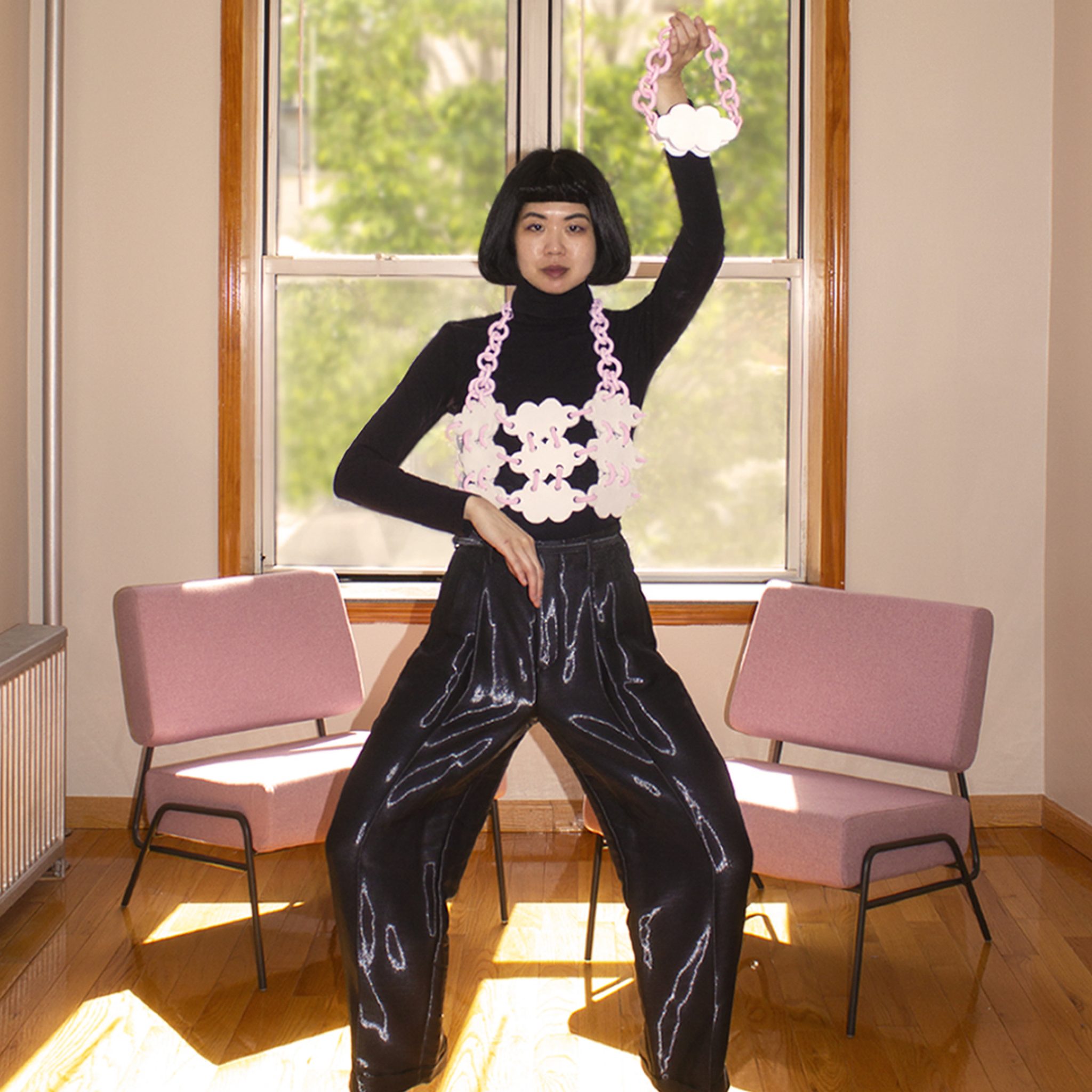
HALTER TOP
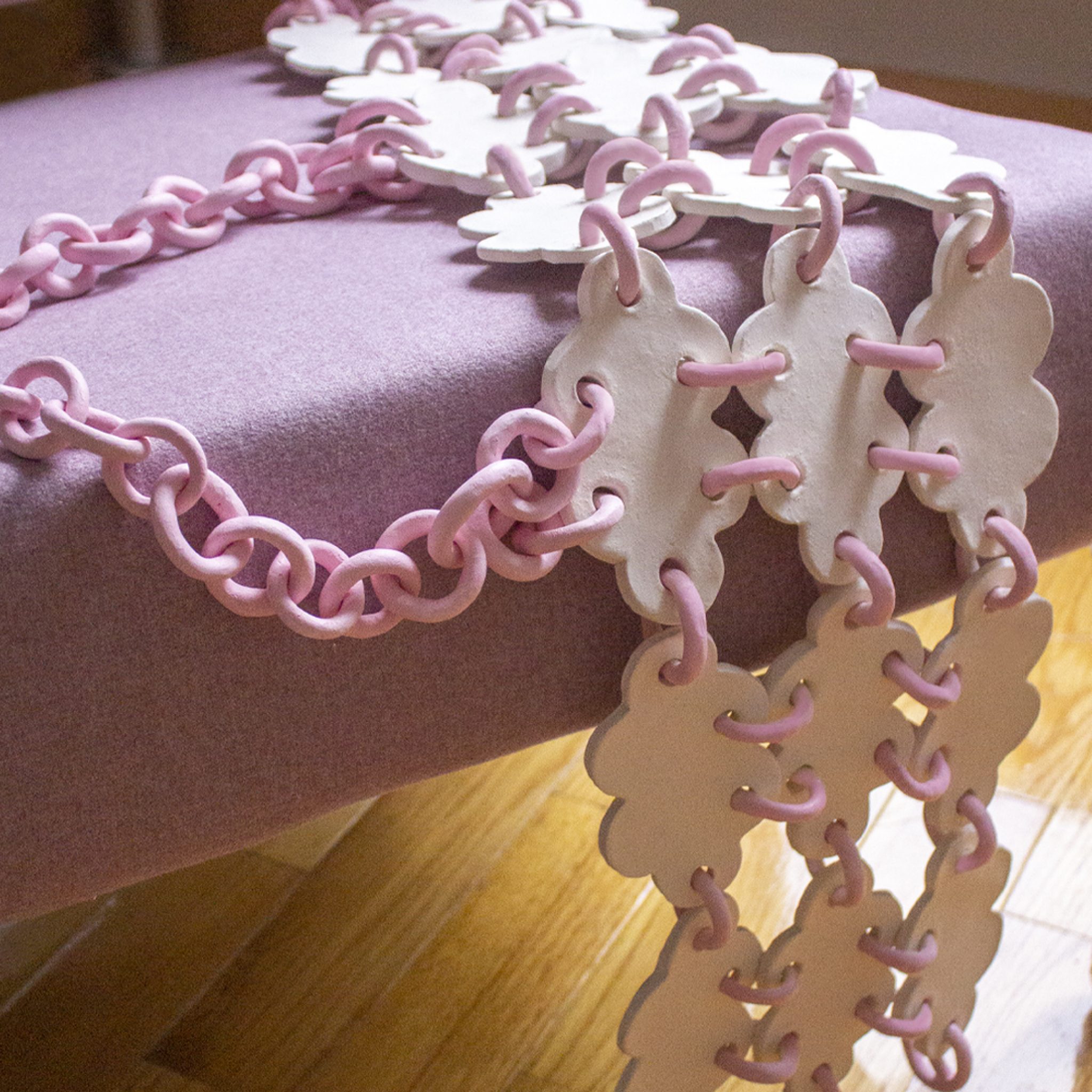
HALTER TOP
“In ‘the world of marinatedclouds’, the body of work I create is just for me and very much a place where I’m focused on developing and evolving my identity through fun expressions.”
Another aspect of your work I find intriguing is how much of it is created in relation to the human body: phones, shoes, wearables, sunnies/goggles, and even potentially usable robotic arm extensions. The idea of wearable ceramics is so fun. What made you explore this?
Haha, I’m glad you think it’s fun because that was honestly the goal—to play and have fun! The idea of playing with my work evolved from the stop motion videos I make for some of my pieces and that train of thought just kind of blossomed from there. Since the majority of my work is purely decorative and because ceramics is inherently a static and fragile medium, I wanted to see how far I could push the boundaries on this by making these delicate pieces “moveable.” This also goes back to my rule of pursuing any and every idea and not letting the medium limit what I can and can’t create.
Break it down for me in real terms, how do you find the time to make your ceramics? How does this fit in with other creative work you do? Does making ceramics serve a particular role in bringing you creative satisfaction?
Ceramics is literally my driving force in life and my main source of creative satisfaction right now, so I do everything I can to be in the studio whenever possible. These days, I freelance as a designer/art director so the amount of studio time just depends on the duration of each job I pick up.
The entire process, from sketch to clay to painting to photographing to editing, brings me enormous joy because having multiple stages like this provides satisfaction from a variety of creative sources and helps to keep things interesting.
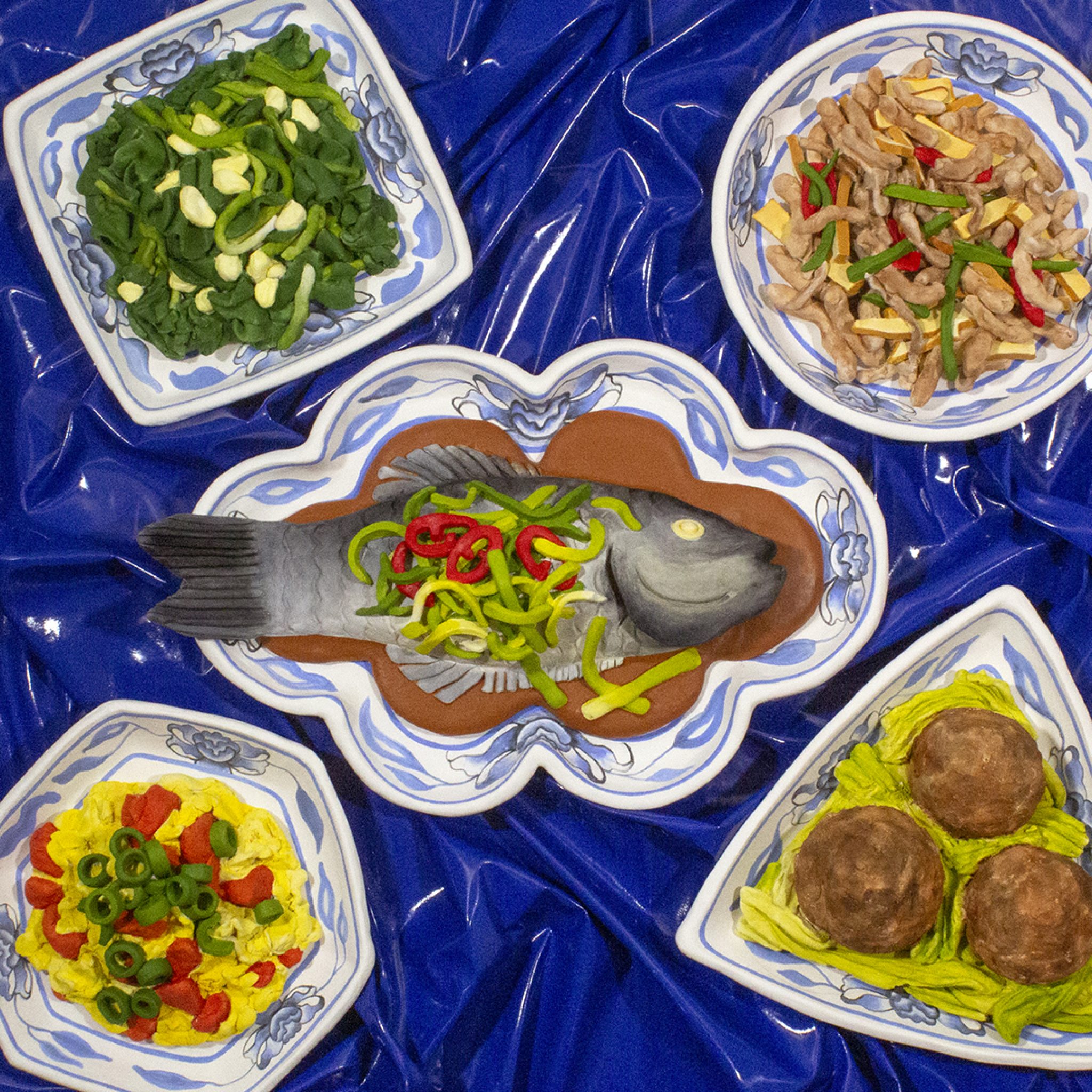
MOM’S COOKING
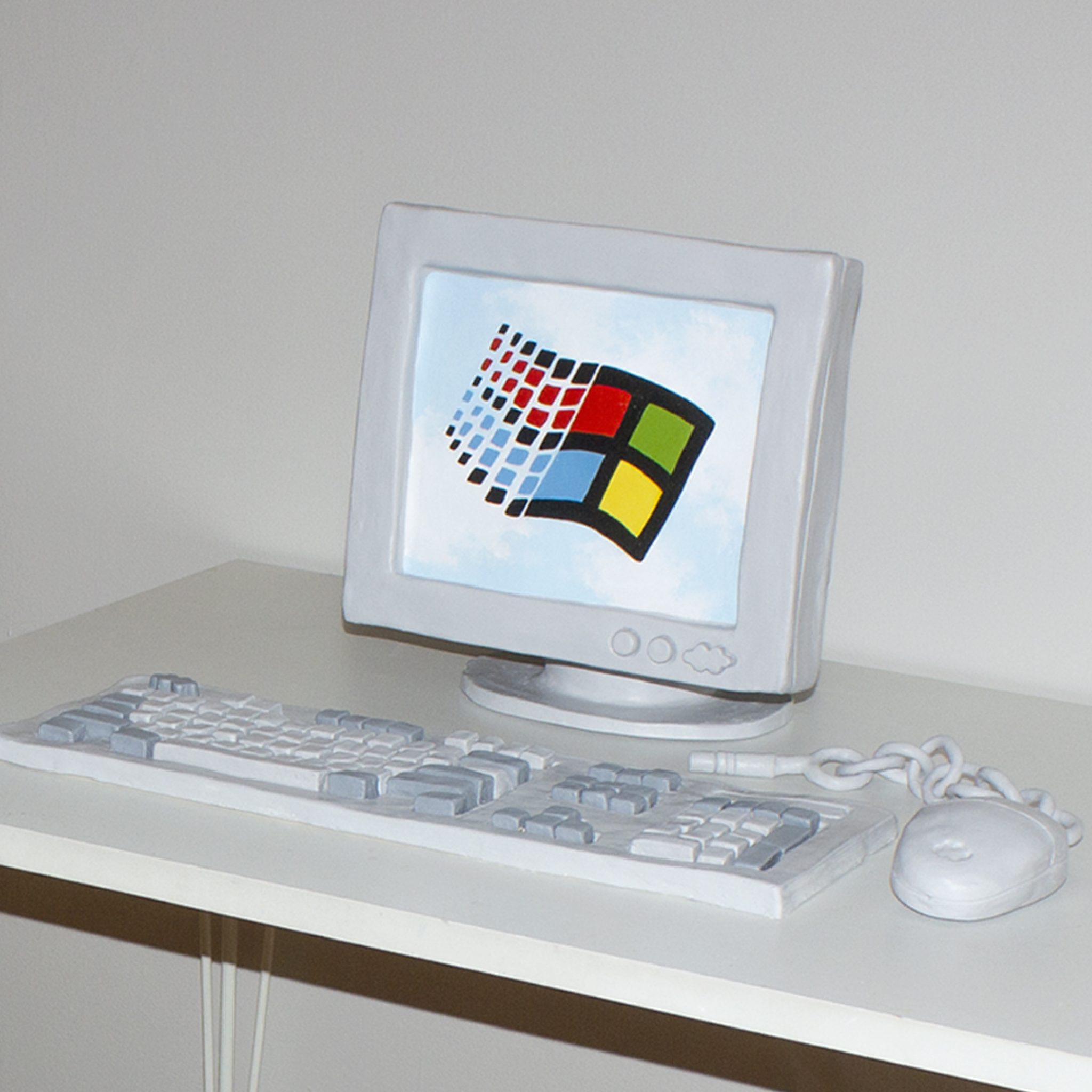
WINDOWS 95
To me, besides creating the ceramic pieces, you make other intentional stylistic choices. You clearly choose to shoot your work in a particular way, make stop motion animations with a consistent feeling, and post your work with intentionally written text. Is there a wider narrative you’re creating?
Absolutely. Because the content of my work isn’t confined to a specific category, everything I create falls into “the world of marinatedclouds.” This world is my sanctuary where I’m free to express any part of myself however I please and the place where all my hopes, dreams and random collection of ideas are manifested into a reality.
It’s also a world where I hope others can come to find the inspiration to materialize their own hopes and dreams. In “the world of marinatedclouds,” the body of work I create is just for me and very much a place where I’m focused on developing and evolving my identity through fun expressions. I’m less interested in what others think as much as the satisfaction I have for myself for maintaining a strong sense of self. This is who I am and I’m no longer scared to be the person I always was. It took me a long time to find this confidence, so for sure, the wider narrative I’m creating is for anyone who visits “the world of marinatedclouds” to walk away with a smile and the courage to embrace doing your own thing and to be undeniably you.
How do you think of your work in relation to the landscape of art, design, and craft? Do you think about how your work is situated?
I find inspiration from any and all creative disciplines so I feel like much of the work I create combines influences that span different categories within all three landscapes, from both the past and the present.
Coming from an agency background, I naturally think a lot about how my work is situated and draw heavily on my experiences working with brands, clients and teams, specifically in terms of ideating, articulating an idea and presenting. It’s a skillset that has proved to be very valuable, but I’m also very conscious of how this background and way of thinking can easily dismiss a good creation due to a lack of concept. I actually make it a point to actively rebel against it by embracing my spontaneous side and making pieces simply because I want to, without a purpose or thinking further about its placement beyond just wanting to do it.
There’s an equal sense of fulfillment you can achieve when you just create. It doesn’t make the work any less substantial or interesting, especially if you create that piece with the same discipline and meticulousness as other pieces.
I feel like I still have so much to learn and improve on, especially in technique in relation to other practitioners. I work out of a shared studio and my studio mates are always offering me the most helpful advice and suggestions. I’m hoping as I continue ceramics, I’ll evolve both in technical skills and development of style.
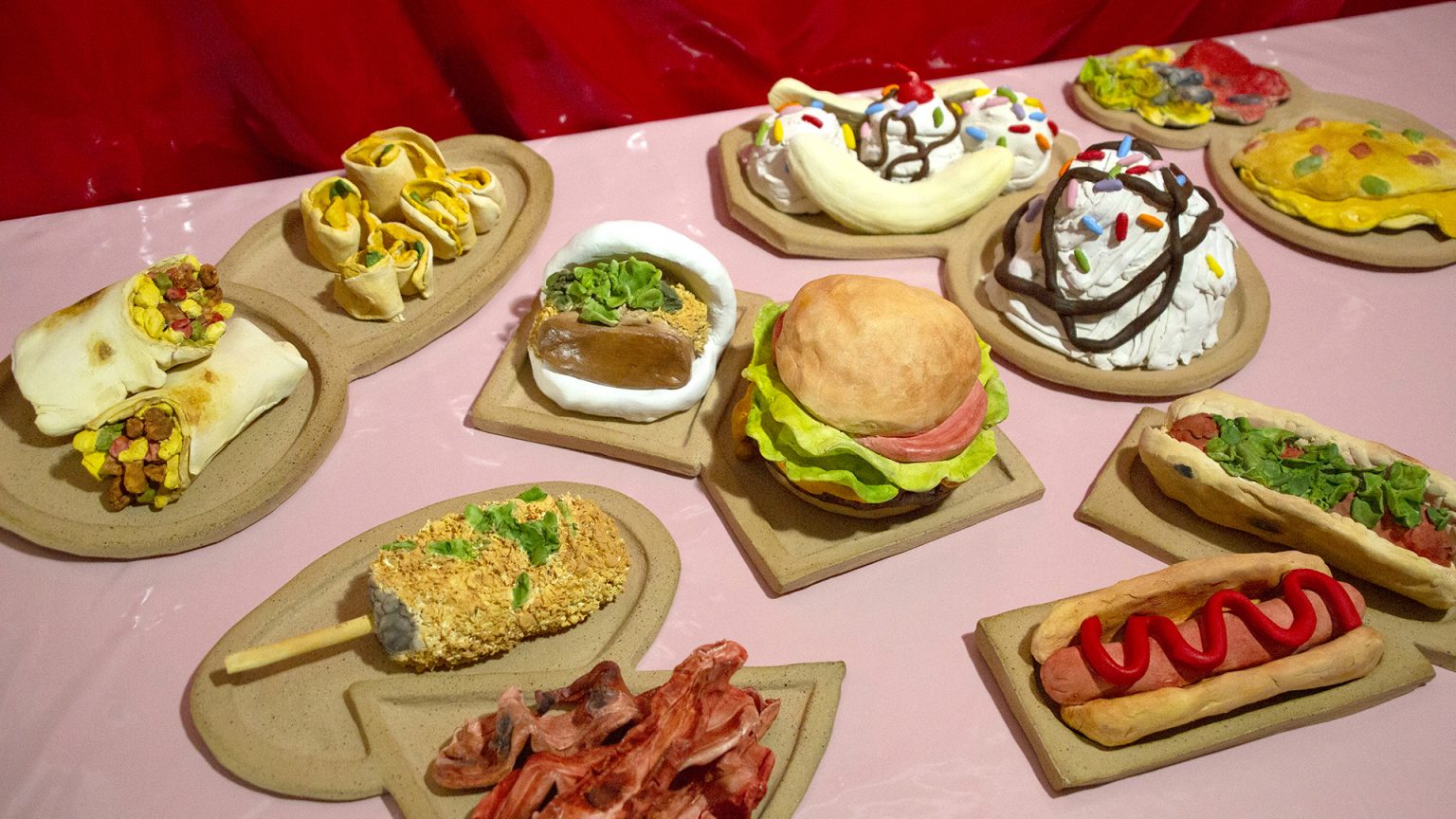
I AM TAIWANESE AMERICAN
What is your technical work process like?
Every object begins with a sketch and a blueprint of exactly how I’ll build the piece. This is actually the most extensive part of my process because I break down exactly what parts need to be made, how and when, and in the exact order I need to build it. For example, which parts need to be made first so it can dry out or when to attach certain parts together. And regardless of complexity, whether it’s a donut or a pair of skates that can literally roll, everything gets a blueprint. It’s the most efficient way to maximize my time/productivity at the studio.
Since I have a blueprint of how each piece should be built, once I get to the studio, I just grab my clay and hit the ground running by checking off the sketch list I prepared beforehand. When the piece is done and dried, I wish my baby luck and send it to the kiln to be fired. After it comes out of the kiln, the magic of painting happens.
What’s next for you when it comes to making?
I’m scaling up! Most of the objects I make are pretty life-size already, but I want to see if I can go bigger. I started experimenting with certain objects at a larger scale, and it’s taking me some time to adjust to the new mechanics. One of the larger objects I started testing will also be wearable so I’ll be pretty stoked if it works out.
I’ve also got another research-based project in the works, similar to the chicken and rice project in terms of how different cultures do the same thing differently, but not with food. I’m still in the research phase—I’ve been reaching out to different universities around the world so it’s going to take a few more months to synthesize that data in a cohesive manner, layout a foundation and begin making.
See more of RC Shen’s work and follow her on Instagram.
